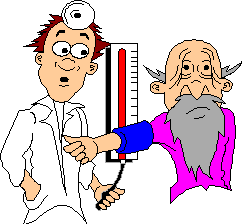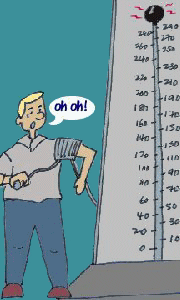| Hypertension means high blood pressure. The blood pressure reading of a person is taken by using a sphygmomanometer. It is composed of two numbers which are the systolic and diastolic blood pressure. The upper number called the systolic BP reflects the amount of pressure generated by the heart while pumping blood towards the arteries. The lower number called the diastolic BP represents the pressure in the arteries when the heart is at rest. The blood pressure increases when the heart pumps more blood and when the diameter of the arteries becomes narrowed. Most of the time, a person with hypertension has no symptoms. People used to watch out for nape pain or headache and dizziness to tell them that their BP is rising. This is actually a wrong notion because these symptoms are usually observed when the hypertension is already in the advanced stage. Sometimes these symptoms are accompanied by weakness and palpitation.  We call the hypertension as primary or essential when we cannot pinpoint the cause of the condition. It is secondary when there is an underlying condition that is causing the hypertension. This can be a thyroid problem, an adrenal, or a kidney problem. We call the hypertension as primary or essential when we cannot pinpoint the cause of the condition. It is secondary when there is an underlying condition that is causing the hypertension. This can be a thyroid problem, an adrenal, or a kidney problem.

The best time to take the BP reading is in the morning. If upon several readings the BP is beyond 140/90, it is best for you to visit your physician for your medication. It is also good if you could trim down your built to your normal weight, increase physical activity in the form of exercise, avoid or totally stop smoking, and to minimize alcohol intake. A few lifestyle changes will help you manage your condition. Hypertension is difficult to manage with just one visit to your physician. Follow ups are needed for adequate monitoring. Other problems that contribute to your condition should also be managed as well.
|